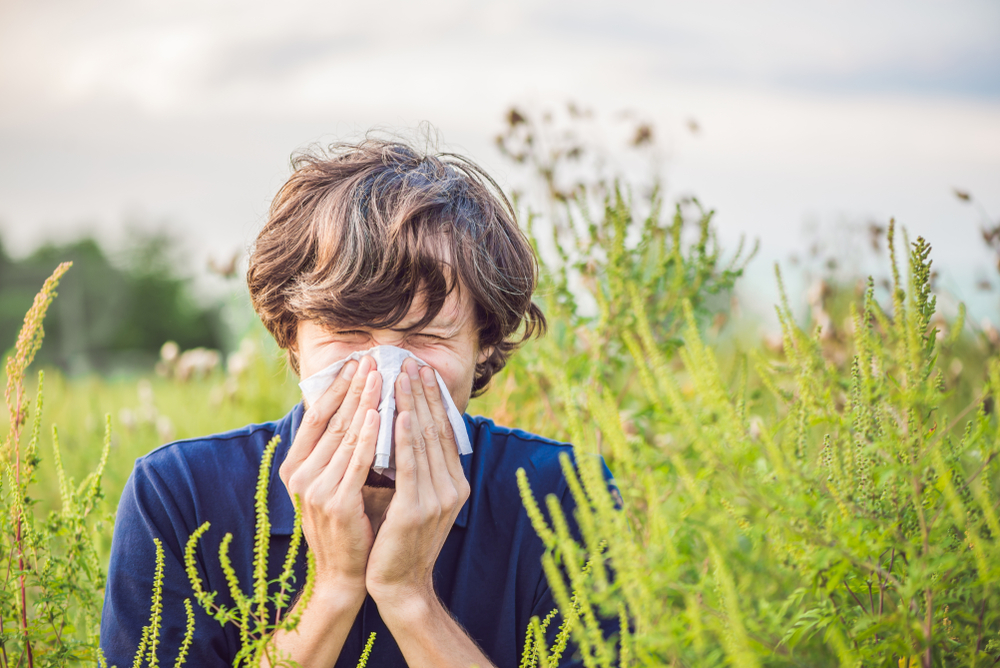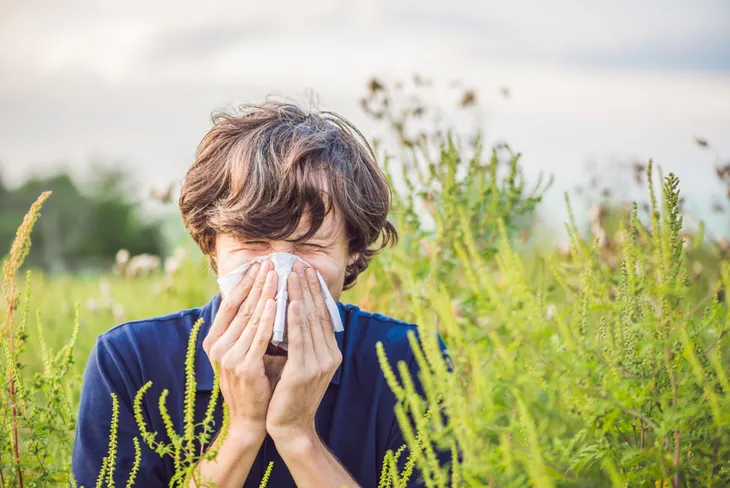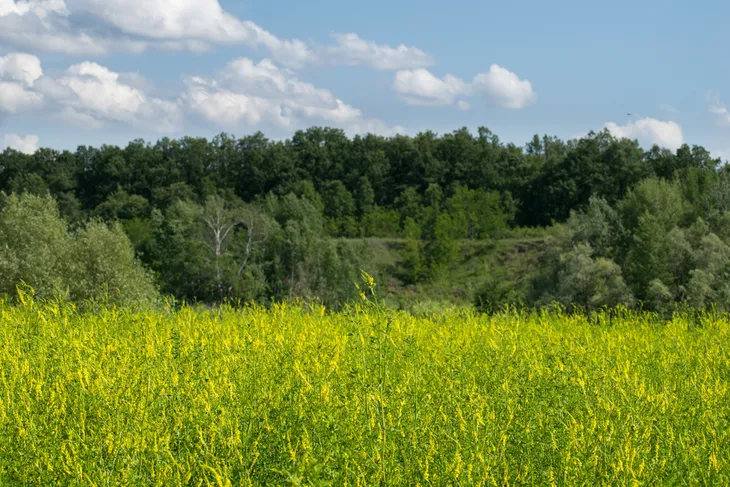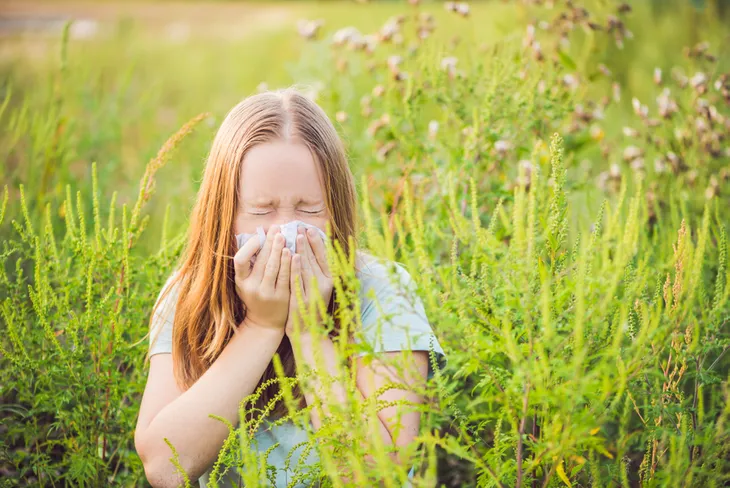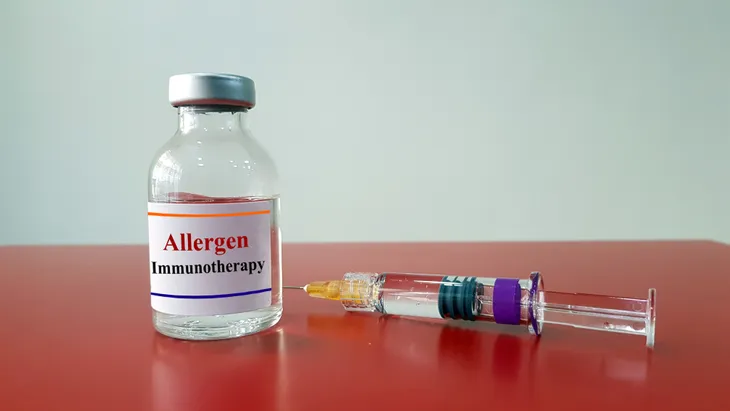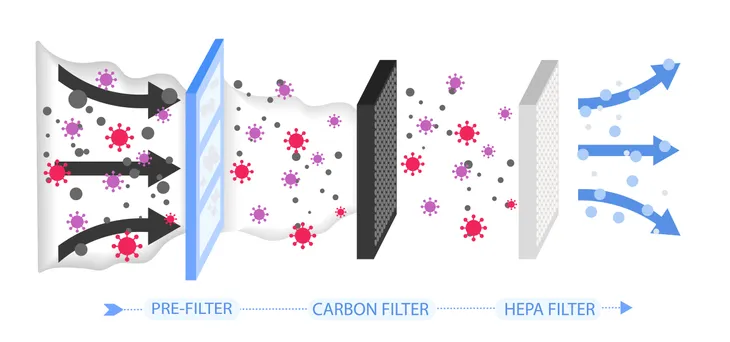Do you experience allergies in the late summer to early fall? There’s a good chance you may be allergic to ragweed and you’re not alone. About 10 to 20-percent of Americans suffer from an allergy to ragweed pollen and the symptoms are very unpleasant.
The plant is incredibly invasive too and is found in many places across North America. In fact, Medical News Today reports, “just one plant can release as many as 1 billion pollen grains, which create future ragweed plants and cause significant seasonal allergies.” In an effort to better understand ragweed allergy, we uncover everything there is to know, including important facts, the common symptoms, and the treatment options available. Let’s dive in!
Interesting Facts About Ragweed
There are several types of ragweed but the most prevalent species in North America is Ambrosia artemisiifolia. Medical News Today says this pesky plant thrives in warm temperatures and the humidity and wind help transfer the pollen across large areas.
Another interesting fact is that the “pollen has been found 400 miles out at sea and 2 miles up in the air,” says the source. It also happens to be resistant to herbicides making it a difficult plant to destroy.
Common Symptoms of Ragweed Allergy
Common symptoms that indicate you may be allergic to ragweed include congestion, runny nose, coughing or wheezing, scratchy throat, or itchy and watery eyes. You may also experience sinus pressure, swollen skin under your eyes, decreased smell or taste, and have difficulty sleeping.
It’s important to note these symptoms can vary from person to person. The time of year and where you live will also play a role in the severity of your symptoms.
What Causes Ragweed Allergies?
The immune system is an amazingly complex system that helps protect your body from outside invaders from bacteria and viruses to fungi and toxins. When it senses a harmful invader, it will try to fight it.
Healthline explains, “In people with ragweed allergies, however, the immune system mistakenly identifies the harmless pollen as a dangerous intruder and begins to fight against it.”
The source continues to explain that a natural substance called histamine is then released when you come into contact with ragweed pollen. This is the substance that triggers the unpleasant symptoms of the allergy.
Where Does Ragweed Grow?
Unfortunately for ragweed sufferers, the plants grow in all 50 states of the U.S. although it’s most common in the east and midwest. It commonly grows along riverbanks, roadsides, fields, but can also be found in many other places.
The U.S. isn’t the only place you’ll find ragweed either. It’s also found in many areas of Canada and It’s even found in Europe, such as northern Italy and southern France. Although, projections show that it will likely spread to eastern and northern Europe by 2050.
The invasive plant is making its way to other continents thanks to the warming climate. Accidental dispersal of seeds is also a contributing factor.
When Is Ragweed Pollen Season
To have a reaction to ragweed, you have to come into contact with its pollen. Unfortunately, you can come into contact with it just by breathing in the air. This is why it’s so hard to avoid. So, when is ragweed pollen season?
WebMD says the season typically starts in early August and ends in mid-October. Although, the source says, “some researchers think climate change may be extending that season.” The highest amount of pollen is usually in the air between the hours of 10 a.m. and 3 p.m., however, certain factors like temperature and precipitation can affect these peak times.
Risk Factors
Certain factors can increase your risk of developing an allergy to ragweed. For example, if you’re allergic to dust mites, mold, pet dander, or other types of pollen, you may be at risk for ragweed allergies too.
Healthline says, allergies also often run in the family, meaning if a close family member such as your mother, father, or sibling has a ragweed allergy, then you’re more likely to develop one too.
How to Diagnose a Ragweed Allergy
If you think you have an allergy to ragweed and want a diagnosis to confirm, book an appointment with your doctor. Your doctor may be able to diagnose the allergy or they may refer you to an allergist for confirmation.
An allergist can test for an allergy by marking a section on your arm with a marker. They’ll then place drops of allergens on the skin to see if you have a reaction. Signs of redness, swelling, or itchiness within 20-minutes or less usually indicate you have an allergy.
Treatment Options
Avoiding ragweed pollen is not easy, especially during peak season. Luckily there are a variety of treatment options available that can help relieve your symptoms.
The main treatment options range from medication to allergy shots and lifestyle changes. Let’s take a closer look at these methods next!
Allergy Medication
The good news is, many seasonal allergies sufferers can find relief from over-the-counter (OTC) medications. Some of these include antihistamines like loratadine (Claritin) or diphenhydramine (Benadryl).
Healthline also states decongestants, such as pseudoephedrine (Sudafed) or oxymetazoline (Afrin nasal spray) or nasal corticosteroids, such as fluticasone (Flonase) or mometasone (Nasonex) may also be effective in relieving your symptoms. If OTC medications fail to ease your symptoms, talk to your doctor to find out if prescription drugs are a more suitable option for you.
Allergy Shots
In severe cases, if allergy medications are not working, your doctor may recommend allergy shots. Healthline says, “allergy shots are a form of immunotherapy that involves a series of injections of the allergen.”
The source explains the amount of allergen in the shot will gradually increase in an effort to modify your body’s response to the allergen. The ultimate goal of allergy shots is to help reduce the severity of your allergic reactions. The source also says, “you may experience complete relief within one to three years.”
Lifestyle Changes
Certain lifestyle changes may also help reduce your symptoms. For starters, vacuuming your house at least once a week with a HEPA filter may help reduce your exposure to ragweed pollen. When washing your clothes be sure to dry your clothing in the dryer instead of outside on a clothing line.
Healthline also says, “Some foods and herbs contain proteins similar to those in ragweed pollen, so they may trigger an allergic reaction.” With this in mind, you may want to avoid bananas, chamomile, cantaloupe, cucumber, honeydew melon, watermelon, zucchini, and echinacea. If you notice any tingling to itching sensation after eating these foods be sure to contact an allergist.
How to Limit Contact
Avoiding ragweed pollen may seem like an impossible task especially since it’s in the air you breathe. Luckily, there are ways you can at least limit your exposure to the pollen which should hopefully help decrease your risk of symptoms.
For starters, avoid spending time outdoors during ragweed hours. You can also check your local weather forecast to track pollen counts. WebMD also says keeping your windows closed (at home and in the car) while using central air conditioning with a HEPA filter can also help filter out pollen.
Finally, the pollen can stick to your skin and clothing so it’s best to change your clothes and wash your hands after spending time outdoors.
